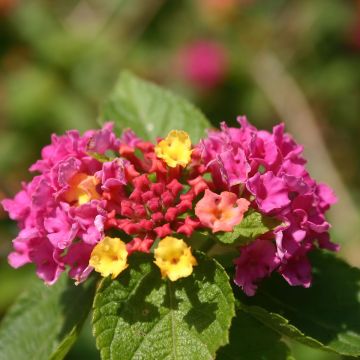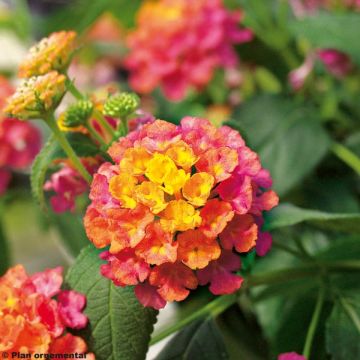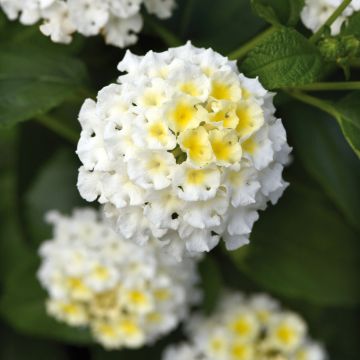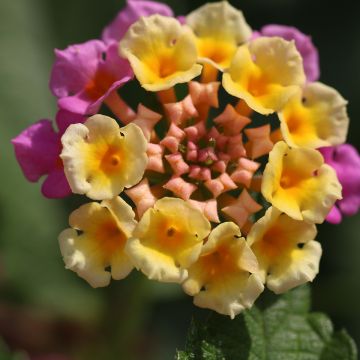
Lantana: how to overwinter it?
Our tips to protect it from the cold
Contents
Lantana is a small evergreen bush in mild climate that offers a long flowering period of brightly coloured rounded clusters in yellow‑orange, pink or mauve. It can only survive outdoors over winter in very mild climate and on the coast. In regions with severe winters, it is grown as an annual and may be put into storage in winter to preserve it, in a pot or window box to provide flowers for a windowsill, balcony or terrace.
Discover all our tips to protect it from cold, whether you grow it in a pot or plant it in the ground.
Differences in hardiness
Lantana is usually a plant that is not very hardy and tolerates only light frosts. It flowers tirelessly all summer, fading at first frosts. In less favourable regions where it is grown as an annual, clumps are pulled up in autumn. Alongside Lantana Camara, which is the species most represented in the genus, there are however new varieties derived from it that are exceptionally hardy, such as the Lantanas from the “Sunshine” series (‘Chapel Hill Yellow’, ‘Chapel Hill Gold’ and ‘Sunny Side up’) or Lantana montevidensis, which can withstand short frosts of around −10/−12 °C in very free-draining soil. They are not limited to our mildest climates and can therefore be grown in the ground in some temperate regions, provided they have good winter protection.
In general, lantanas can tolerate cool temperatures for short periods, but are vulnerable to prolonged cold.

→ further reading: ‘Hardy plants and hardiness’
Read also
Lantana: planting and careHow to keep Lantana over winter?
Growing in pots allows plants to be overwintered and brought back outside after frosts. If you live in a region where frost is frequent and severe, opt for planting in pots. By bringing your lantana indoors at the first frosts, you can prolong its flowering through autumn and winter. Shelter your lantana as an orangery plant, frost-free, in a bright conservatory or a temperate greenhouse at 10–15°C. Reduce watering (two waterings per month suffice) and stop fertiliser applications. In a greenhouse it is susceptible to whiteflies (aleurodes) visible on the underside of the leaves: spray with soapy water or nettle manure. Bring it back outside in the growing season as soon as temperatures warm up, in May–June after the frosts: acclimatise it gradually to full sun.
If temperatures do not fall below −5/−8°C, you can let your lantana overwinter outdoors. Bear in mind that in a pot it will be more vulnerable to weather and frost than a lantana planted in the ground: wrap up the container with cardboard and hessian, then cover the above-ground parts with winter fleece. In spring, remove protective coverings.
Discover other Lantana
View all →Available in 1 sizes
Available in 0 sizes
Available in 1 sizes
Available in 1 sizes
Available in 1 sizes
Available in 1 sizes
Available in 1 sizes
Available in 1 sizes
Available in 1 sizes
Available in 1 sizes
Protecting Lantana planted outdoors
On the coast and in regions with mild winters where it grows as a perennial, Lantana can be left in the ground. As a precaution, protect the stump with a thick mulch of straw or dead leaves. Optionally wrap aerial parts with protective fleece. As soon as temperatures become milder and risks of frost are gone, remove the protective fleece.
To find out more and grow it successfully, do not hesitate to consult our care sheet: “Lantana: planting, cutting, maintenance”
My lantana seems to have been damaged by frost — what should I do?
After winter, a lantana left in the ground may take some time to wake up. If temperatures have not fallen below -10°C, the stump will regrow. No need to panic; sometimes you may have to wait until June to see it come back into flower.
- Subscribe!
- Contents










































Comments